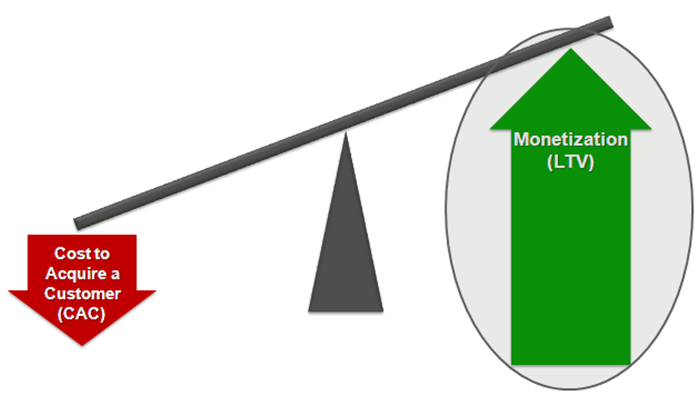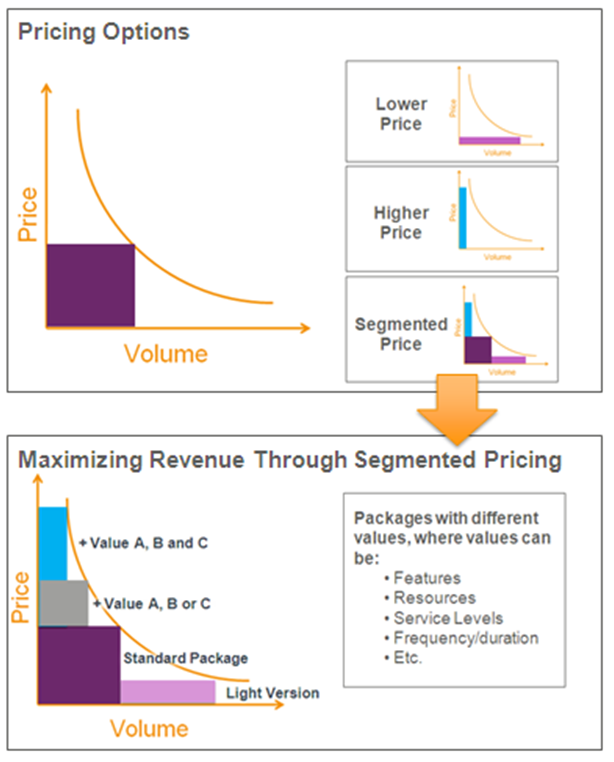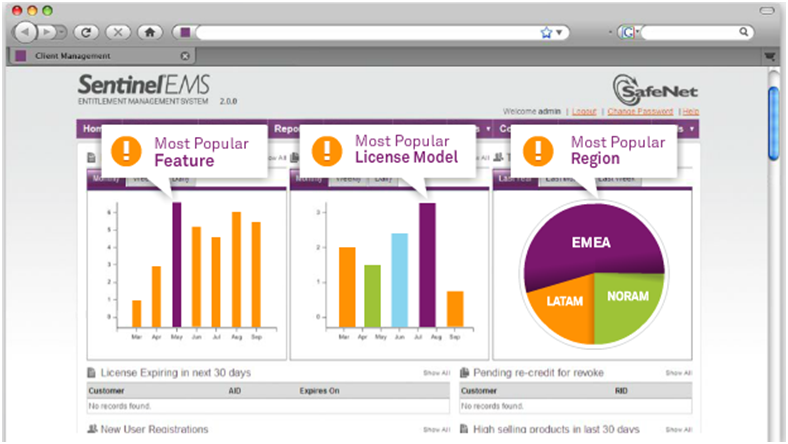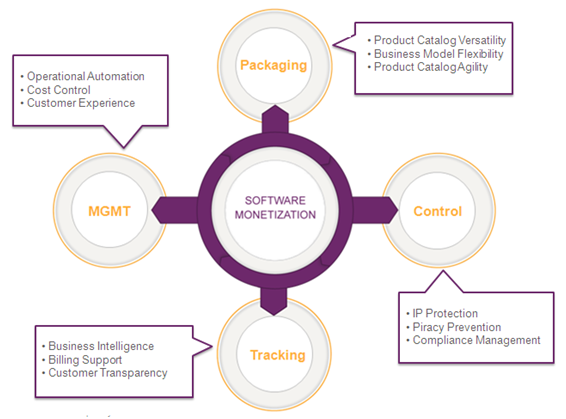With worldwide software-as-a-service (SaaS (News ![]() - Alert)) revenue forecast to reach $14.5 billion this year, there is no doubt that the cloud phenomenon is reaching a critical mass. Just take a look at the latest industry news and it’s impossible to miss headlines about the latest SaaS companies that are taking their product public. Investment firms are pouring millions of dollars into this growing segment because of the promise it holds, yet only the strong will survive.
- Alert)) revenue forecast to reach $14.5 billion this year, there is no doubt that the cloud phenomenon is reaching a critical mass. Just take a look at the latest industry news and it’s impossible to miss headlines about the latest SaaS companies that are taking their product public. Investment firms are pouring millions of dollars into this growing segment because of the promise it holds, yet only the strong will survive.
According to Gartner (News ![]() - Alert), this year’s SaaS revenue is a 17.9-percent increase from 2011 revenue of $12.3 billion. In fact, SaaS-based delivery is predicted to experience healthy growth through 2015, when worldwide revenue is projected to reach $22.1 billion, according to Sharon Mertz, research director at Gartner.
- Alert), this year’s SaaS revenue is a 17.9-percent increase from 2011 revenue of $12.3 billion. In fact, SaaS-based delivery is predicted to experience healthy growth through 2015, when worldwide revenue is projected to reach $22.1 billion, according to Sharon Mertz, research director at Gartner.
“After more than a decade of use, adoption of SaaS continues to grow and evolve regionally within the enterprise application markets,” says Mertz. “Increasing familiarity with the SaaS model, continued oversight on IT budgets, the growth of platform as a service (PaaS) developer communities and interest in cloud computing are now driving adoption forward.”
However, as early adopters of SaaS have realized, it is not easy to find the right catalog segmentation, feature bundling and pricing models. In fact, the number one question SaaS vendors ask once they are in the cloud is: “How do we optimize?”
A balanced cloud business model focuses on two components: minimizing CAC (the cost of acquiring a customer) and maximizing LTV (the lifetime value of a customer), according to Michelle Nerlinger, director of product marketing for SafeNet’s software rights management (SRM) division. In fact, she says the right licensing and entitlement management system fuels the entire SaaS optimization process.

Source (News - Alert) – David Skok, Matrix Partners
“A complete software monetization solution – featuring both licensing and entitlement management components – is critical both in the launch and optimization phases of any cloud service,” Nerlinger explains.
Software monetization means the adoption of any variety of measures a software company takes in order to increase the profitability of their intellectual property, according to SafeNet, which offers software monetization services for small and medium-sized businesses (SMB) up to large enterprises.
Delivering software as a service can open up new markets for software companies and help sell into existing ones, Nerlinger explains. But in order to maximize the value vendors derive from their software offering, their strategy needs to take into consideration each aspect of software monetization – packaging, control, management and monitoring.
According to Nerlinger, there are three core challenges that software publishers have with regard to software monetization in the cloud:
- Service agreement compliance tracking and enforcement
- Flexible packaging abilities
- The ability to easily track and report on product and feature usage
- Control
One of the biggest considerations about cloud is the issue of control and visibility – not only for the end user, but also for the vendor offering a cloud-based service.
“When people think of the cloud, they think the concept of license enforcement does not exist. That is actually not the case; the concept just evolves a bit. The concept of control in the cloud really means ‘How do I control user authorization to my service and the features within it,’” explains Nerlinger. “Imagine that you have a service offering with 10 distinct features. In order to make the offering affordable to a few customers you sold them rights to access a basic version of the service, which in the service agreement only includes access to features one, two, three and four. Once those users are logged into the service, without licensing, what keeps those users from accessing and using features five, six, seven, eight, nine or 10? Nothing.”
Another example, she adds: If you decide to offer a customer pricing based on feature executions, what is stopping your customer from using more executions than they purchased?
“A pricing model for an accounting application could charge users in advance for an agreed number of ‘calculations.’ In this instance, let’s say the user purchased 100 calculations. What is keeping that user from performing 150 calculations? Without licensing, nothing. Another example of revenue leakage,” Nerlinger says.
Avoiding this conflict means implementing a proven software licensing solution that will allow software vendors to control user authorization at the feature level so they know that all usage is conducted by paying customers and that they are never consuming more than they have paid for.
Packaging
For both customers and providers, the benefit of a SaaS model is that it allows for an offering that fits customers’ needs. However, contrary to popular belief, software packaging is not a one-time event and despite the hopes of product managers around the world, “one size” is never going to “fit all.”
“You can have the most sophisticated, feature-rich offering on the market, but if you can’t offer flexible pricing and licensing models you will never reach your maximum potential,” says Nerlinger. “And just when you thought the work was done, you are going to need the ability to change all of your pricing and packaging schemes on the fly to satisfy the constantly evolving demands of enterprise and consumer end-users alike.”

Source – SafeNet, Inc. 2012
So what does it take to be successful in the world of software packaging? According to Nerlinger, the following three components make up the foundation of a successful SaaS vendor:
- Product versatility – What the customer wants to pay for.
- License model flexibility – How customers want to pay for it.
- Business model agility – The ability to adapt to new customer requirements on the fly.
“Software licensing and entitlement management enables you to separate your engineering processes and your business processes so you can build product- and feature-level bundles, associate any variety of licensing schemes individual features or products, and change both your bundling and licensing schemes on the fly, anytime without ever needing to involve engineering,” adds Nerlinger.
Tracking
The ability to effectively track and easily report on what end-users are: a) entitled to, and b) what they have consumed – when and to what extent – is the last, but certainly not least, major challenge when it comes to achieving success in cloud software monetization.

Source – SafeNet, Inc. 2012
“Product and feature usage monitoring provides the business insight required to report on license agreement compliance, optimize product roadmap investment, and drive future packaging strategies. Insight into how products are being used is key to effective product line management,” she says. “Armed with a full understanding of which features are being used and to what extent provides product managers with an easy way to identify which features they should be investing in, and equally as important, where to disinvest.”
This knowledge can also help with overall use-case prioritization and investment mapping.
“Having an understanding of the various ways that customers use your products lends itself to smarter packaging decisions,” Nerlinger says. “Determining which features to package into a baseline product and which features can be sold as added value allows product management and marketing to more appropriately reach customers who want a low investment in the software all the way up to the larger deployments that want full access at a much grander scale.”
Licensing and Management
A properly deployed licensing and entitlement management system will automatically track all product usage right down to the feature level and provide you not only with customizable ways to report on this data, she says, but will easily integrate into other back office systems that require this data to operate including but not limited to billing, ERP (enterprise resource planning), CRM (customer relationship management) and marketing automation systems.
“In the launch phase, it is critical to have an efficient way to provision, track and control use of your service. You must be able to control authorization to prevent overuse or misuse and protect revenue. You must be able to easily provision, track and report on usage to ensure a positive customer experience, enable business processes such as billing, and to have the data necessary to grow/change your business models. All of these things are core to software licensing and management,” explains Nerlinger. “And software licensing and management becomes even more critical over time as you look into how to diversify and grow your business.”
The features of a software monetization solution control authorization to features and services, enable product versatility, provide flexible licensing models, track detailed product and feature usage data, and allow for organizational agility by separating engineering and business processes.
Together, these features can be leveraged to optimize any SaaS business by following five proven steps:
- Track all product and feature usage as granularly as possible.
- Evaluate that data on an ongoing basis to identify patterns (i.e., what is being used, what is not being used, what is used most, what time of day are services being used, etc.)
- Take that information and make decisions on how to segment your market into groups with similar usage/spending patterns.
- Take the information you know about how the segment gets values from your offering and test out new business models that provide the highest value to the customer and provide the most revenue for you.
- Rinse and repeat.
However, it’s important to note: “All of these steps are either impossible or incredibly manual, time-consuming and prone to human error without the proper licensing and entitlement management tools in place,” warns Nerlinger.
Experimentation and Implementation
SafeNet’s family of Sentinel Software Monetization solutions include Sentinel HASP, Sentinel EMS, Sentinel RMS, and Sentinel Cloud, which are designed to allow software vendors to grow their business as well as work seamlessly with outside products. In addition, SafeNet’s Sentinel Professional Services team of software licensing and entitlement management experts is available to guide organizations through the setup and implementation process.
SafeNet also hosts an annual LicensingLive! event, which is a collection of online and in-person resources that give software publishers direct access to industry analysts, licensing and monetization consultants, peer organizations and solution providers to obtain the latest tips, tricks and best practices around software monetization.
“The software industry is fast-paced, competitive and evolving. End-users are demanding convenient access to their business and personal applications – anywhere, anytime, and from any device. Software publishers are shifting gears to provide maximum flexibility and reinvent their approach to software monetization,” Nerlinger says.
The next LicensingLive! event will be held Oct. 2-3, 2012 in Cupertino, Calif. The events are generally attended by leading names in the software industry and in the past have featured presentations by industry experts such as IDC’s Amy Konary and Saugatuck’s Bruce Guptill, as well as leaders from Cisco (News ![]() - Alert), Brocade, Micro Focus, Akamai, Dell Boomi, among others.
- Alert), Brocade, Micro Focus, Akamai, Dell Boomi, among others.
“In today’s competitive market, an effective software monetization strategy directly depends on how effectively a software publisher is able to package, control, track, and manage their offerings,” Nerlinger concludes. “Getting it right is hard work. It takes time, experimentation, and the implementation of clean, flexible software licensing and entitlement management systems.”

Source – SafeNet, Inc. 2012
To register for SafeNet’s next LicensingLive event, go to www.licensinglive.com.
Join the Software Monetization conversation today:
LicensingLive! Blog –
Twitterhttp://licensinglive.com/blog (Icon) - @licensinglive, #swlicensing, #swmonetization
YouTube (Icon) –
LinkedIn (News - Alert)www.youtube.com/licensiglive (Icon) – http://www.linkedin.com/groups?home=&gid=2878111&trk=anet_ug_hm
Edited by Braden Becker




